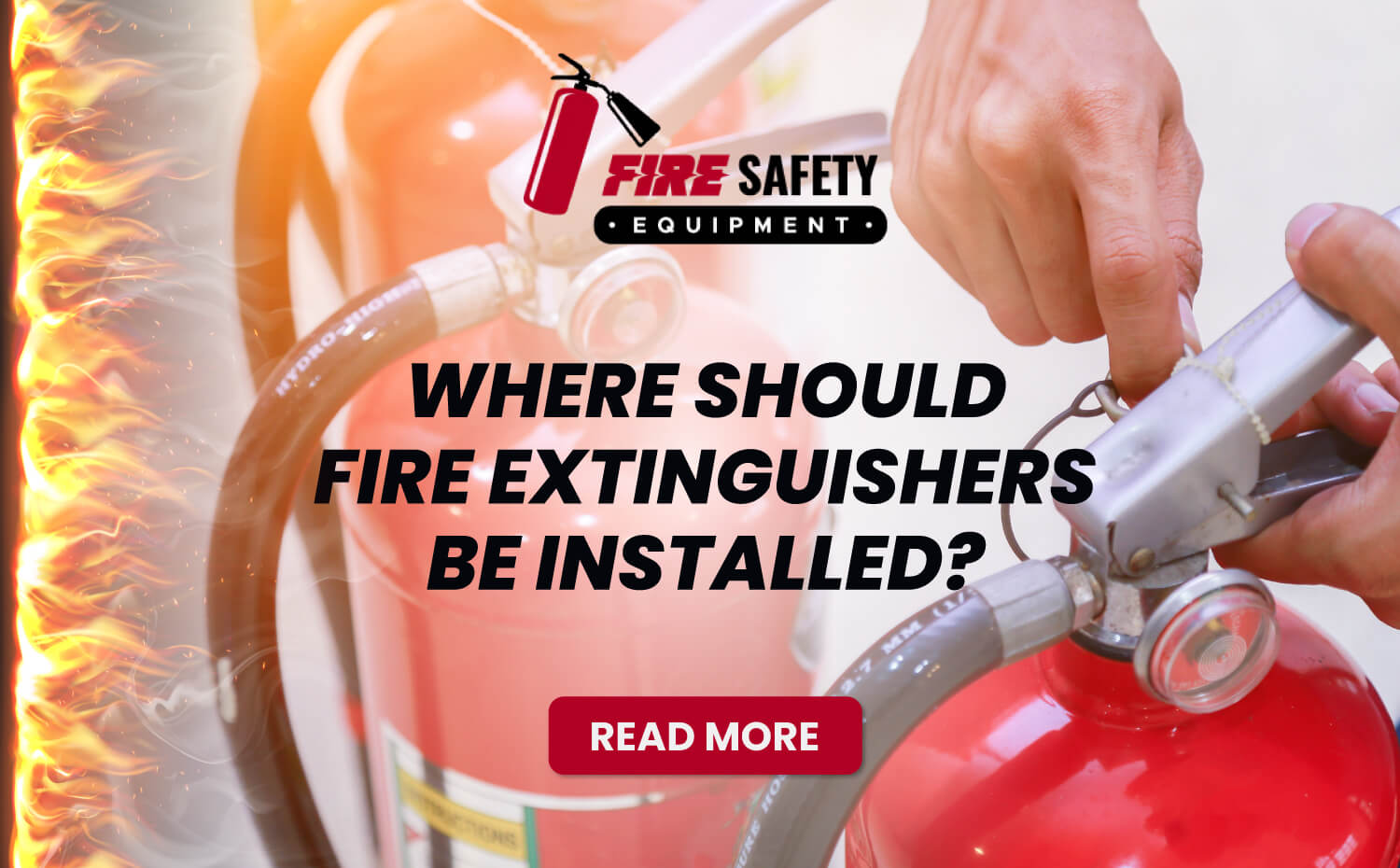Where Should Fire Extinguishers Be Installed?
Posted by Fire Safety Equipment on 17th May 2022
Where Should Fire Extinguishers Be Installed?
During a building fire, the fire sprinkler system turns on to extinguish the fire. But if the flames aren't that big, you can put out the fire by using a fire extinguisher. Note that the fire sprinkler system engaging for a small fire isn't ideal because other dry areas will get wet.
Usually, the fire sprinkler system turns on because there was no time to get a fire extinguisher. Fire Safety Equipment is here to guide you on the best places to install your fire extinguishers inside your commercial building.
Place fire extinguishers in easy-to-reach areas:
The most effective places to install fire extinguishers inside your commercial building are easy-to-reach areas. Some examples of sites are near exit doors, meeting rooms, and other familiar locations. You also need to remove any obstructions that could make it difficult for people to reach the fire extinguisher when they need it.
Install the correct type of fire extinguishers:
There are different fire extinguishers from Fire Safety Equipment that can extinguish a specific type of fire. Note that using the wrong fire extinguisher won't work. The fire may worsen and cause massive flashes that can hurt your eyes. And if you're extinguishing a fire combusted by electricity, there's a slight chance that the current would run through the conductive foam or water and electrocute you.
That's why it's essential to understand the classifications of fire extinguishers to determine what you will need in your building. There are five classifications you need to know about, including:
Class A: It's the most common fire extinguisher that you can find in homes or buildings with ordinary or organic combustibles, such as paper, cloth, wood, and plastics. They usually don't have chemicals mixed in them that would violently react with the flame, so the fire extinguisher contents are either foam or water.
Class B: Fire extinguishers that gas stations would always have are Class B fire extinguishers. These fire extinguishers work well with flammable liquids, including gasoline, alcohol, lacquers, and oil-based paints. They extinguish the flames using a foam-based chemical and cut off the air supply from the fire since the flammable liquids will become worse if you use water or a liquid-based fire extinguisher.
Class C: You can mostly find Class C fire extinguishers in offices, factories, and areas that have live electrical equipment present. It's also another classification that involves suffocating the airflow of the fire by using CO2 fire extinguishers. They use the cold to put out the flames generated by live electrical equipment.
Class D: When fires happen in large industrial buildings, there's a big chance that the metals caught fire, and you will need a high-grade fire extinguisher to put the flames out. That's where Class D fire extinguishers come into play because they can extinguish flames from combustible metals. It's another fire extinguisher that uses dry powder to stop airflow and prevent the fire from combusting.
Class K: If your building has a restaurant inside, you need to get Class K fire extinguishers because they effectively put out flames caused by commercial cooking equipment that have boiling cooking and vegetable oil and animal fat.
When you need high-quality fire extinguishers, get them from Fire Safety Equipment. Order yours today!
